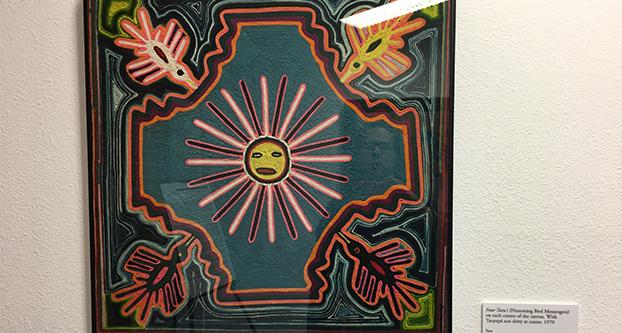Most people know that Juan Felipe Herrera is the U.S. Poet Laureate, but what they might not know is that he is also an anthropologist and photographer. He demonstrates this in the Elotes con Sangre (Corn Stalks and Blood) exhibition at 1419 M St Studios in downtown Fresno. The exhibit is free and open to the public from Oct. 6 – Oct. 21.
The exhibition tells the story of Herrera going to Mexico in the 1970s to make cultural connections with his Chicano roots. As an anthropologist, he wanted to study the people least affected by Spanish influence. He found that in the Huichol (the Wixáritari) were the last native people to be encountered by the Spanish.
Herrera took pictures and brought some of their art home, then collected them to create the Elotes con Sangre.
All of the photos are black and white. They illustrate the lives of the Huichol and the land they live in. The photos also illustrate in part how the Huichol made the nierikas or yarn painting.
“The nierikas are a form of art that is created by laying lengths of yarn on a piece of wood,” said Cindy Urrutia, director of Fresno State center for creativity and the arts. “The wood is covered with cera de campeche, a type of wax.”
The yarn is then embedded in the wax and left to sit out to dry in the sun. The easiest way to describe the nierikas is as a yarn mosaic. The piece is comprised of many pieces of yarn all deliberately layered out in designs
The nierikas are vibrantly colored with blue, yellow and red. They picture religious figures and religious symbols. They are often symmetrical in design.
Urrutia explained why the nierikas are so important to the Huichol.
“The nierikas were only made by shamans until recent times,” Urrutia said. “This is because they were seen as offerings to the god.”
Herrera said in the exhibit description he returned from the trip in 1970 a “changed man”. This helped him connect with his ancestors
“Let us honor all of our ancestors far and near,” Herrera said. “Let us act and unite.”




